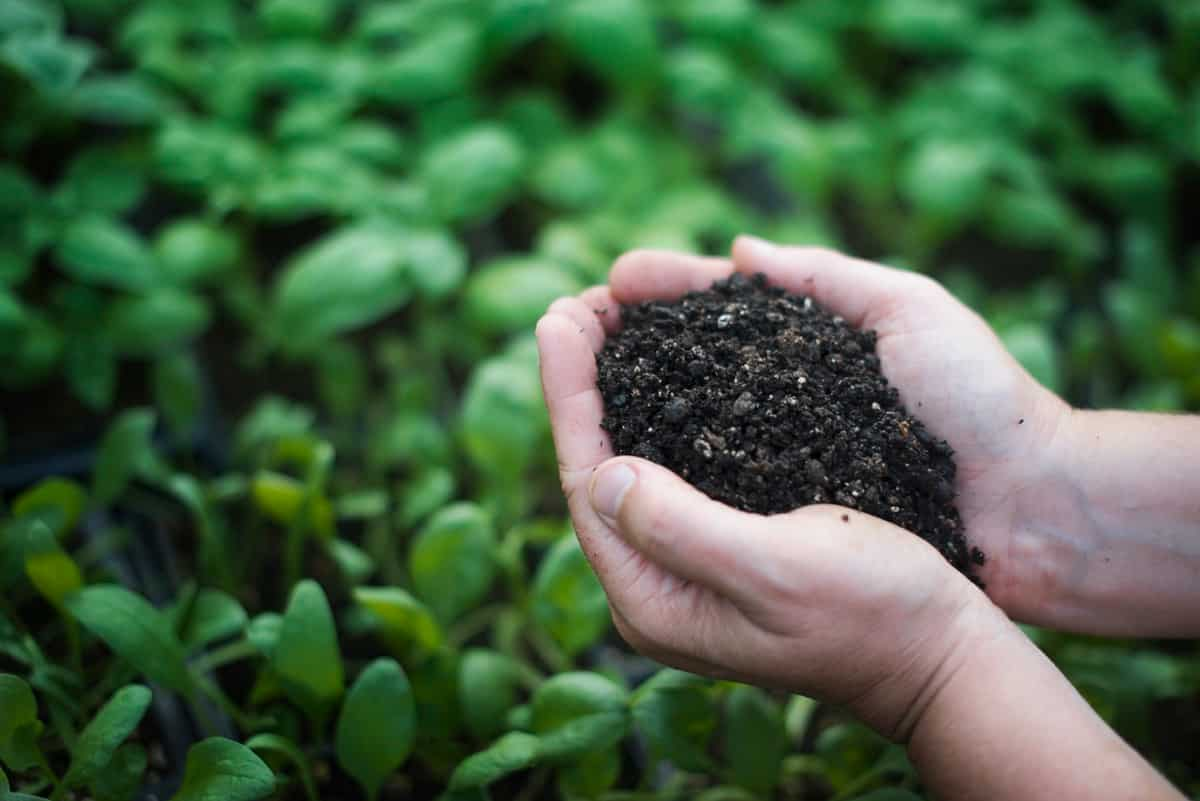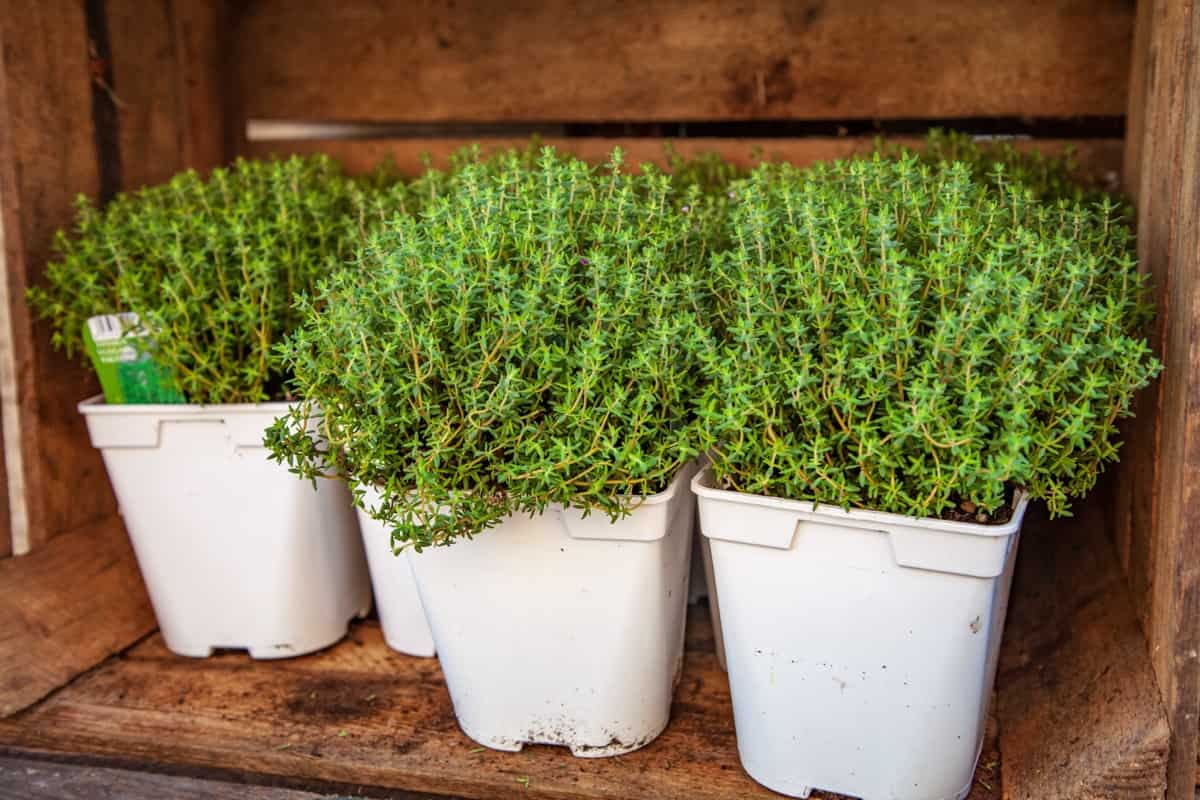Thyme plants are popular for potted gardens due to their aromatic foliage and culinary uses. Providing the necessary nutrients is important to ensure the health and vitality of your potted thyme plants. Fertilizing your thyme plants with organic, natural, homemade fertilizers can be a great way to nourish them without synthetic chemicals. This document will explore the benefits of organic fertilizers for thyme plants in pots and discuss the NPK ratio and when and how to apply these fertilizers.

Organic Fertilizers for Thyme Plants in Pots: Nurturing Your Plants Naturally
One popular organic fertilizer for potted thyme plants is compost. Compost is made by decomposing organic matter, such as kitchen scraps, yard waste, and plant residues. It is rich in nutrients like nitrogen(N), phosphorus(P), and potassium(K), vital for plant growth. Applying compost to your potted thyme plants provides a slow-release source of nutrients and improves the overall soil structure.
Natural Fertilizers for Thyme Plants in Pots: for Environmentally-friendly Options
A natural fertilizer option for thyme plants is well-aged manure. Manure from herbivores, such as cows, horses, or chickens, can be an excellent source of organic matter and nutrients. Before applying manure to your potted thyme plants, ensure it has been properly composted or aged to reduce the risk of harmful pathogens. Manure can be mixed into the soil or used as a top dressing around the base of the plants.
Homemade Fertilizers for Thyme Plants in Pots: DIY Solutions for Optimal Plant Health
Organic Liquid Fertilizer: Another homemade fertilizer option is an organic liquid fertilizer made from kitchen scraps. Collect vegetable scraps like carrot peels, coffee grounds, and eggshells. Blend these scraps with water until you obtain a smooth consistency. Strain the mixture to remove solid particles, and use the resulting liquid to fertilize your thyme plants. This organic liquid fertilizer provides a range of nutrients and promotes soil health.
Fish Emulsion Fertilizer: Fish emulsion is a natural fertilizer that provides a rich source of nutrients for thyme plants. Mix 1 part fish waste (such as fish scraps or guts) with 2 parts water to prepare fish emulsion fertilizer. Let the mixture sit for a few days, stirring occasionally. Strain the liquid and dilute it with water before fertilizing your thyme plants. Fish emulsion fertilizer is high in nitrogen and contains trace minerals supporting plant growth.
In case you missed it: Homemade Thyme Oil Spray for Pests and Disease Control: Recipe for Natural and Organic Benefits of Plants

NPK Ratios and Their Importance in Selecting Fertilizers for Thyme Plants in Pots
When selecting fertilizers for thyme plants in pots, it is important to consider the specific NPK ratio. The ideal ratio depends on the plant’s growth stage and specific nutrient requirements. During the vegetative growth stage, a fertilizer with a higher nitrogen (N) content, such as 10-5-5 or 20-10-10, can be beneficial. This will support lush foliage development and overall plant vigor.
Slow-release Fertilizers: Enhancing Nutrient Availability for Thyme Plants in Pots
When applying slow-release fertilizers to thyme plants in pots, it is important to follow certain guidelines for optimal results. Firstly, select a slow-release fertilizer with a balanced nutrient composition, including nitrogen (N), phosphorus (P), and potassium (K). Thyme generally thrives with a ratio of N:P: K in the range of 1:1:1 or 2:1:1.
Secondly, carefully read the manufacturer’s instructions for the recommended application rate and frequency. Slow-release fertilizers are typically applied at the beginning of the growing season and provide nutrients for several months. Lastly, ensure that the fertilizer is evenly distributed around the base of the thyme plant, avoiding direct contact with the foliage.
pH Levels and Fertilizer Selection for Thyme Plants in Pots: For Balanced Soil Environment
Thyme plants thrive in slightly acidic to neutral soil, with a pH level range of 6.0 to 7.5. Maintaining the appropriate pH level in the soil ensures efficient nutrient uptake and plant availability. It helps to prevent nutrient deficiencies and toxicities, allowing thyme to grow and develop optimally.
Regularly testing the pH level of the potting soil is crucial for maintaining a balanced soil environment. Agricultural lime needs to be added to increase the pH level (make the soil more alkaline). On the other hand, to decrease the pH level (make the soil more acidic), organic matter like peat moss or compost can be incorporated into the potting soil.
The Importance of Timing: When to Apply Fertilizer to Thyme Plants in Pots
During the establishment stage, immediately after planting, thyme plants focus on developing a robust root system. Applying fertilizer during this stage can help provide the necessary nutrients for root development, ensuring a strong foundation for the plant. The vegetative stage is characterized by vigorous leaf growth. This is the ideal time to apply fertilizer, as the plant requires a steady supply of nutrients to produce healthy foliage. Fertilizing during this stage can encourage lush green leaves and promote overall plant vigor.
In case you missed it: How to Grow Thyme from Cuttings: Planting Explained in Simple Steps

Once thyme plants enter the flowering stage, their energy shifts towards producing flowers. It is generally advised to reduce or stop fertilizing during this stage to prevent overstimulation of foliage growth instead of flower production. Allowing the plant to focus on flower development will result in a more bountiful display of blooms. Regarding the frequency of fertilization, it is recommended to apply fertilizer every six weeks during the growing season. This ensures a consistent supply of nutrients to support the plant’s growth and development.
How to Apply Fertilizer to Thyme Plants in Pots: Techniques for Maximum Effectiveness
Applying fertilizer correctly is crucial to ensure maximum effectiveness and avoid any potential damage to thyme plants in pots. Here are some techniques to follow when applying fertilizer to thyme plants:
Choose the right fertilizer: Thyme plants generally benefit from a balanced fertilizer with equal nitrogen, phosphorus, and potassium (NPK) parts. Look for a fertilizer formulated for herbs or vegetables, as they often contain the necessary nutrients in the right proportions.
Measure accurately: To avoid over or under-application, it is essential to measure the fertilizer accurately. Follow the label instructions to determine the appropriate fertilizer for your thyme plants.
Apply evenly: Distribute the fertilizer evenly around the base of the thyme plant, avoiding direct contact with the leaves or stems. This helps prevent the risk of burning the plant and ensures that all areas receive the necessary nutrients.
Water after application: After applying the fertilizer, water the thyme plants thoroughly.
Water-soluble Fertilizers for Potted Thyme Plants
Following the manufacturer’s instructions to apply water-soluble fertilizers to potted thyme plants properly is important. Typically, these fertilizers are mixed with water at the recommended dilution rate and applied directly to the soil around the base of the plant. It is vital to avoid over-fertilization, as this can lead to nutrient imbalances and potential damage to the plant. Regularly monitoring the plant’s growth and appearance will help determine the appropriate frequency and dosage of fertilizer applications.
In addition to their convenience and effectiveness, water-soluble fertilizers offer another advantage for potted thyme plants: they can help prevent nutrient leaching. Due to their compact size, potted thyme plants are more susceptible to nutrient runoff when excess water is applied. When properly applied, water-soluble fertilizers are less likely to leach out of the soil, ensuring that the nutrients are available to the plant and not wasted.
Table for Fertilizing Potted Thyme Plants: Organic, Natural, Homemade, NPK Ratio And When to Apply
| Type of Fertilizer | Fertilizer | When to Apply |
| Organic | Compost, Worm casting | Spring and Fall |
| Natural | Well-aged manure, Green sand | As side dressing |
| Homemade | Banana Peels, Coffee grounds | As side dressing |
| NPK ratio | 10-5-5 | Three splits/ season |
| Water soluble | Fish Emulsion, Seaweed Extract | During growing season |
| Slow release | In the form of Spikes available in the market | During growing season |
In case you missed it: When to Plant Vegetables in Oregon: Growing Calendar for Western and Eastern Regions

Conclusion
Fertilizing potted thyme plants is essential for their growth and flavor. Organic options like compost and worm castings are highly recommended, while homemade fertilizers like banana peels and eggshells can also be used. Pay attention to the NPK ratio and apply the fertilizer during the growing season, following the recommended dosage. You can ensure healthy and thriving potted thyme plants by providing the right nutrients at the right time.
- Feed Your Flock for Less: Top 10 Tips to Save on Chicken Feed
- Ultimate Guide to Ossabaw Island Hog: Breeding, Raising, Diet, and Care
- Hatching Answers: The Top 10 Reasons Your Chickens Aren’t Laying Eggs
- Eggs and Economics: Breaking Down the Cost of Raising Backyard Chickens
- Defend Your Greens: Proven Methods to Keep Iguanas Out of Your Garden
- Ultimate Guide to Cinnamon Queen Chicken: A Comprehensive Guide for Beginners
- Ultimate Guide to California Tan Chicken: Breeding, Raising, Diet, Egg-Production and Care
- Ultimate Guide to Marsh Daisy Chicken: Breeding, Raising, Diet, and Care
- 10 Types of Chicken Farming Businesses You Can Start for Profits